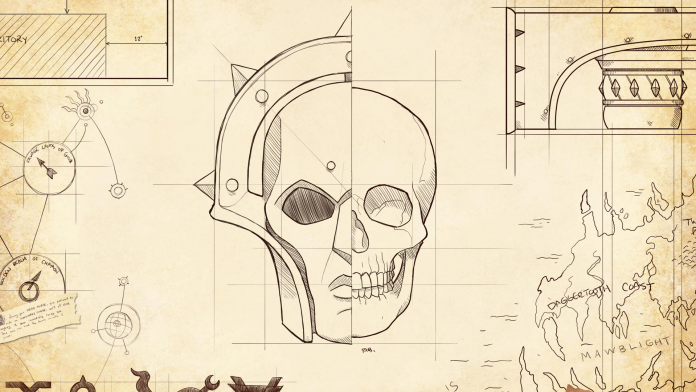Once again Gareth opens the Generals’ Pocketbook for a study on Age of Sigmar. In every game, there’s a certain maximum number of points available to each player. Andtor has spiced things up a little bit with some battleplans skewing the math. These pages of the Pocketbook lay out some of the details you might not think of in the heat of battle.
Scoring Points
There’s 3 ways that you can score points in Age of Sigmar pitched battles. I’m going to refer to these by Primary, Secondary and Tertiary. Each point is worth the same as each other so the names are just a way of thinking about them rather than any indication of importance.
Primary:
When you think of primary, or primary power, it’s in reference to the objectives on the board and how good you are at controlling them. Soulblight Gravelords has very strong Primary power due to their ability to control so much of the board with hordes of zombies that keep coming back.
Secondary:
Secondary power are Battle Tactics and your Grand Strategy. Being able to score these while interacting as little as possible with both your opponent and your dice are signs of good secondary power armies. Disciples of Tzeentch and Daughters of Khaine are great examples of these.
Tertiary:
Tertiary objectives are ones set out by the battle plan you’re playing on. An example is Towers in the Tundra where there’s a potential 8 point swing dependant on who controls the towers at the end of the game.
So with this established let’s lay out some fundamentals. In every game of Age of Sigmar Pitched Battles, you can score by standing on objectives and scoring your Grand Strategy and Battle Tactics.
The first of these, Primary objectives are by default, 15. Most of the scenarios are standard “One, Two, More” scoring, which nets you 3 points if you achieve all 3. Get that over 5 turns and you’ve got yourself 15 points.
Every turn you can score 2 from your Battle Tactic,which gives you 10 points by the end of the game, then you score your Grand Strategy and you’ve got max- 28 points. Just force your opponent to drop 1 point anywhere and you’ve won!
There’s a couple of maps that subvert this principle, which are part of what makes them interesting to play on.
Being a spreadsheet kinda guy, I made the below reference table to give an idea of exactly what you are aiming for on each battle plan.
| Primary | Secondary | Tertiary | Max per turn | Max per game | |
| Power Flux |
10 | 13 | 15 | 7 | 38 |
| Geomantic Pulse |
19 | 13 | 0 | 3/6/7/7/6 | 32 |
| Nexus Collapse |
15 | 13 | 0 | 5 | 28 |
| Lines of Communication |
15 | 13 | 0 | 5 | 28 |
| Every Step is Forward |
15 | 13 | 0 | 5 | 28 |
| Limited Resources |
15 | 13 | 0 | 5 | 28 |
| Spring the Trap |
15 | 13 | 0 | 5 | 28 |
| Fountains of Frost |
15 | 13 | 0 | 5 | 28 |
| Icefields | 15 | 13 | 0 | 5 | 28 |
| Frigid Zephyr |
15 | 13 | 0 | 5 | 28 |
| No Reward Without Risk |
15 | 13 | 0 | 5 | 28 |
| Towers in the Tundra |
10 | 13 | 4 | 4 | 27 |
Power Flux: Scoring on this plan is a bit weighted towards factions who have both good Andtorian Loci, and are able to kill wizards. The 15 cited is the max potential, and realistically you’re not going to get close to this in an average game as to do so you’d need to both hold 2 points with an Andtorian Locus, and kill an enemy wizard every turn. No mean feat.
Geomantic Pulse: My personal favorite battle plan, Pulse rewards you for being able to control the active objective and also the ones to either side of it. If you are able to force the centre early and control your opponents access to the side that the Pulse is travelling to you can end up with a heady lead.
Towers in the Tundra: The last of our non-standard battleplans this year, Towers in the Tundra basically gives you a second Grand Strategy. Stop your opponent controlling their tower, and stop them from stopping you controlling your tower for a massive 8pt swing. Towers is also a 2 objective game, so it won’t be uncommon for evenly matched armies to score quite low on this one.

What does this all mean?
Well to start with, this is a target for you. In a perfect game, you should make 100% certain that you are capable of scoring the maximum possible. Your opponent will be doing everything to make it tricky, so the closer you can get while stopping them is the meat of the game.
However, it’s easy to get discouraged when you eat a nasty opening turn and something goes wrong. I’ve played my share of either side, where I get discouraged and give up or shake hands, and then looking through my notepad I kick myself when I realise the win was within my grasp the whole time, I just didn’t see it!
To help myself and others with that I created this resource to reference. When you know how many points are left in the game it can crystalise decision making.
| Points remaining in game at start of turn: |
1 | 2 | 3 | 4 | 5 | End of Game Scoring |
| Power Flux |
38 | 31 | 24 | 17 | 10 | 3 |
| Geomantic Pulse |
32 | 29 | 23 | 16 | 9 | 3 |
| Nexus Collapse |
28 | 23 | 18 | 13 | 8 | 3 |
| Lines of Communication |
28 | 23 | 18 | 13 | 8 | 3 |
| Every Step is Forward |
28 | 23 | 18 | 13 | 8 | 3 |
| Limited Resources |
28 | 23 | 18 | 13 | 8 | 3 |
| Spring the Trap |
28 | 23 | 18 | 13 | 8 | 3 |
| Fountains of Frost |
28 | 23 | 18 | 13 | 8 | 3 |
| Icefields | 28 | 23 | 18 | 13 | 8 | 3 |
| Frigid Zephyr |
28 | 23 | 18 | 13 | 8 | 3 |
| No Reward Without Risk |
28 | 23 | 18 | 13 | 8 | 3 |
| Towers in the Tundra |
27 | 23 | 19 | 15 | 11 | 7 |

How do I use this?
So fundamentally you look at your battleplan, check which turn you’re in, and this table will tell you the maximum number of points left in the game at that point. Remember it’s much easier to deny points late game when armies are depleted and all the good Battle Tactics have been used up. Keep your head in the game even when it seems like you’re in a sticky spot- there’s often a way out if you look hard enough and have all the knowledge at your disposal.
Go out and seize those victory points General, they’re yours for the taking!
Have any questions or feedback? Did you find this useful to your games of Age of Sigmar? Drop us a note in the comments below or email us at contact@goonhammer.com.


